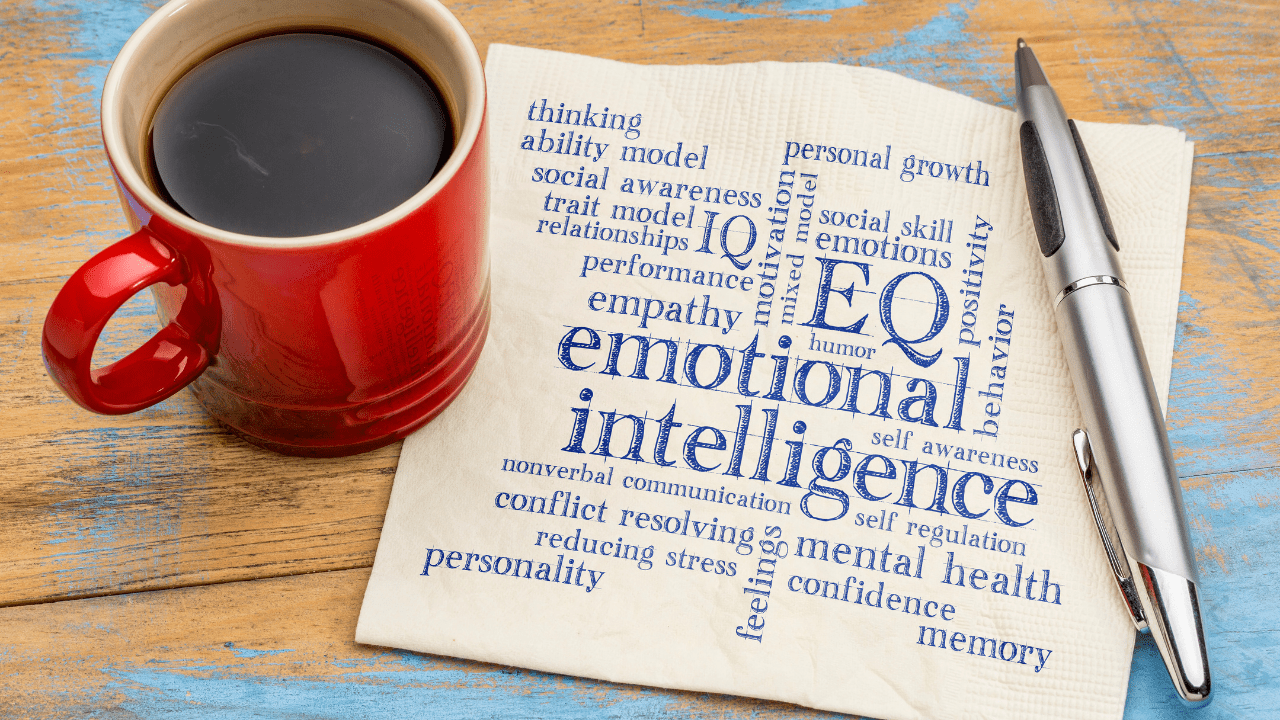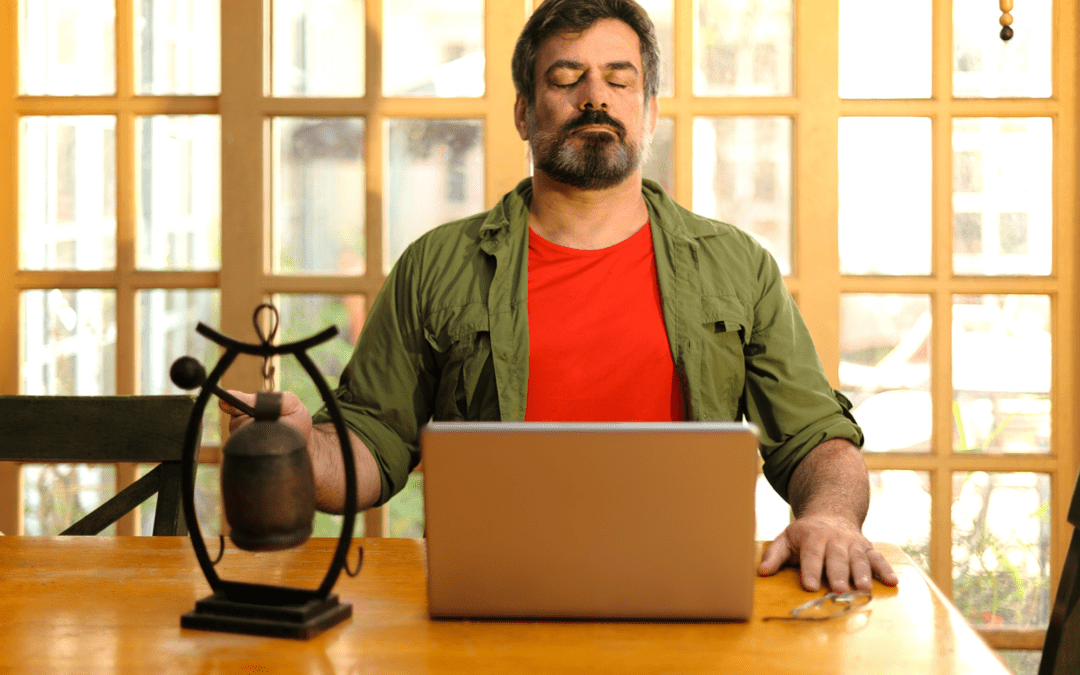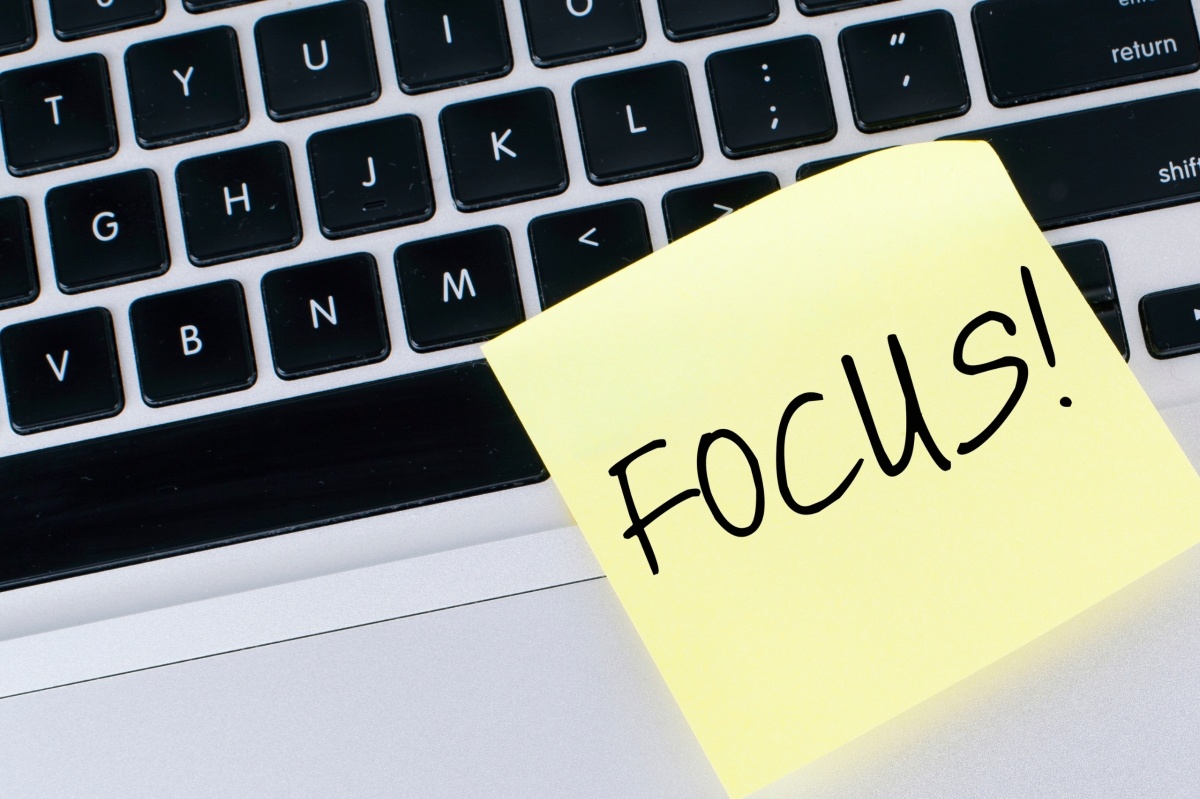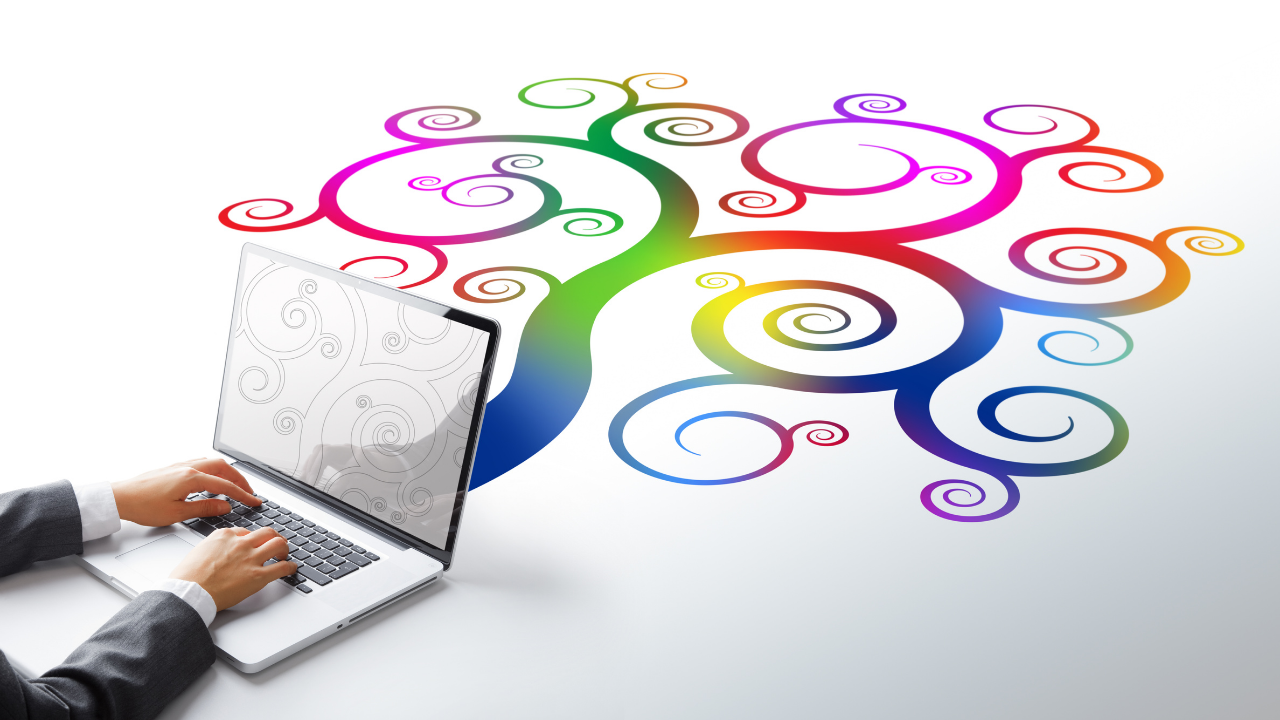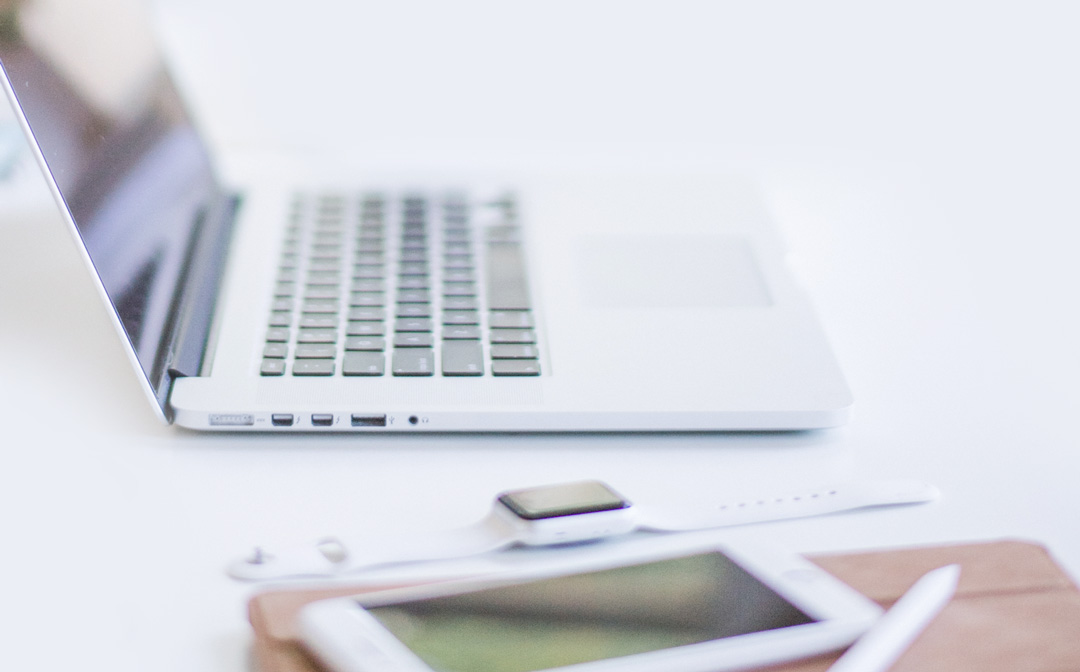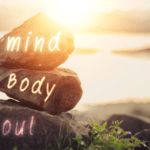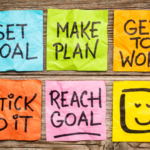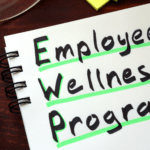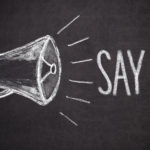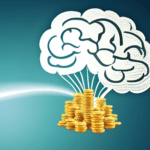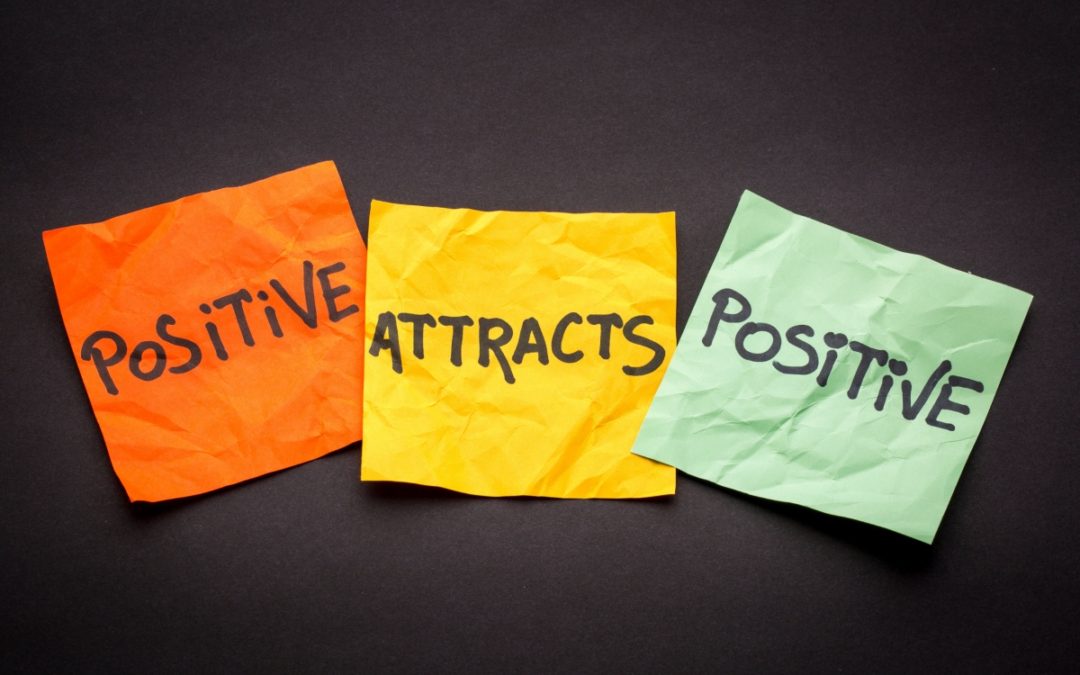
What Is The Law of Attraction and Your 5-Step Power Guide to Apply It
Learn How to Apply the Law of Attraction for Real Life Results by Understanding the Science.

“If you want to find the secrets of the world, think in terms of energy, frequency, and vibration.” — Nikola Tesla
I start with a quote by one of the greatest scientific minds of the 19th century (and I’d argue throughout history) to show you that the Law of Attraction (LOA), when understood properly, is rooted in science and energy — not in modern self-help. To really understand it, you have to suspend your doubt.
What is the law of attraction – from the mystique to physics
The Law of Attraction, in its most basic form, states that the energy you embody, whether positive or negative, is what you will attract back into your life. Essentially, if you stay focused on the positive — you will attract more of this. If you are down in the dumps, or pessimistic, you will only attract more of this negativity back to you.
Now if you think back to Newton’s 3rd Law, we know that for every action there is an equal and opposite reaction. So you might be thinking — shouldn’t the opposite of what you project be more likely to happen? Yes and No. Yes — somewhere in the Universe, the opposite may be occurring. But No is a much stronger answer. Here’s why:
Newton’s laws were only based on physical actions and reactions. Much later, we discovered thermodynamics, gravity, and quantum mechanics. In quantum theory, we are looking far below tangible matter. We are looking at the subatomic elements or potentials of reality. Here, possibility and probability of a potential outcome is the key. At the subatomic level, energy influences the outcome of physical reality. This is where the Law of Attraction is premised.
To ask yourself what is the law of attraction — you must understand that this quantum or subatomic level is what it’s all about. And we know that Newton’s laws, and even Einstein’s gravity and relativity principles, aren’t the laws of the land here. Rather, ‘strange’ phenomenon that we can’t always wrap our heads around govern. For instance, Entanglement and the Observer Effect are both quantum principles. Entanglement describes a permanent connection between subatomic matter that far outlasts its physical or observable relationship. The Observer Effect tells us that a potential outcome is affected by the Observer of the phenomenon.
So in the quantum realm — where all energy is the director and precursor of matter — the Law of Attraction makes much more sense. We can create into physical reality that which we think, feel, and visualize. Hopefully, this scientific grounding makes it easier to see why this law isn’t fluff, and that it has value to offer us when we practice it with intention and credence. Now let’s talk about how to do that.
What is the law of attraction – the universal principles
The law of attraction is broken down into three simple principles. Learn and reflect on them first, before you go on to implement the 5-Step guide. The reason for this is that for the Law to work, you must understand these so well that you can move on into the ’embodiment’ — this is where the action happens. You need to be proficient in the principles to embody them in the deeper layers of the mind, particularly your subconscious mind. That is the only way for LOA to work in your life. Let’s take a look at these universal principles:
LOA Principle #1: Like Attracts Like
When you are working with the Law, you’re not in the opposites attract space. In this quantum possibility layer — the vibration signal you create attracts a similar vibration in return. All thoughts, feelings, perceptions, attitudes create these vibration signals. So remember, a positive mindset and beliefs will attract the same positivity.
In sum, positive thinking attracts positive and desirable experiences in life; negative thinking attracts negative experiences.
LOA Principle #2 – Nature Abhors a Vacuum
We know it’s important to remove mental clutter, cognitive dissonance, and discordant beliefs to make space for better things. Similarly, when you remove negativity from your life, you make space for more positive things. It’s important to fill the void in your mind with positivity immediately. That’s how the law of attraction works. Otherwise you will revert.
LOA Principle #3 – The Present is Always Perfect as Is
This one is so critical! You must leave the past behind. Everything that has happened until now is perfect as is.
Even if there was pain, suffering, loss, disappointment, heartache — we must let it go. We not only let it go, but we realize all of it brought us to this moment. This moment is perfect. It is in this present that you realize, you are exactly where you need to be to create your brightest future and attract the very best.
Apply the law of attraction: Your 5-Step Power Guide
As the age-old adage informs us, “where attention flows, energy goes.” This is how you create or manifest your own reality — by focusing on the things you want to attract in your life. When you wholeheartedly concentrate your attention on what you desire, your energy and vibratory signature will bring it to you.
Besides these LOA benefits, these tips will also work to revitalize your mindset and attitude. Even if you’re still skeptical about the Law itself, you’ll sow the seeds for benefits in your brain and life.
To start attracting what you really want, make sure you practice these techniques daily. So start by setting aside the time to practice the law of attraction. And remember to learn and embody the foundational beliefs to making the Law work first.
How to Apply the Law of Attraction Step #1 – Accept LOA as Principles of Energy
Again, for the Law to work fully, you must believe that it is a vital, fundamental principle of energy mechanics at play. You must believe that you have Power. This is what it means to be empowered. If you think that your mind has little impact, then you will marginalize and sabotage yourself before you even get started with the Law.
A simple way to start is with one day – the day in front of you – in mind. In the morning, start by intentionally visualizing how you want your day to unfold. Build a clear image of the hours of your day and see yourself accomplishing key tasks. Imagine yourself happy, fulfilled and strong while you are doing it.
How to Apply the Law of Attraction Step #2 – Set Daily Priorities, Stay Focused
This can be applied on the micro scale of a day and with big-picture goals. Always write down what you hope to achieve – it will help you stay clear about the internal thoughts you have. Even if you think the task is small and not highly ambitious, if it adds value to your day, write it down.
If you want to hit your goals on time, successfully, write them down and create a clear thought signature.
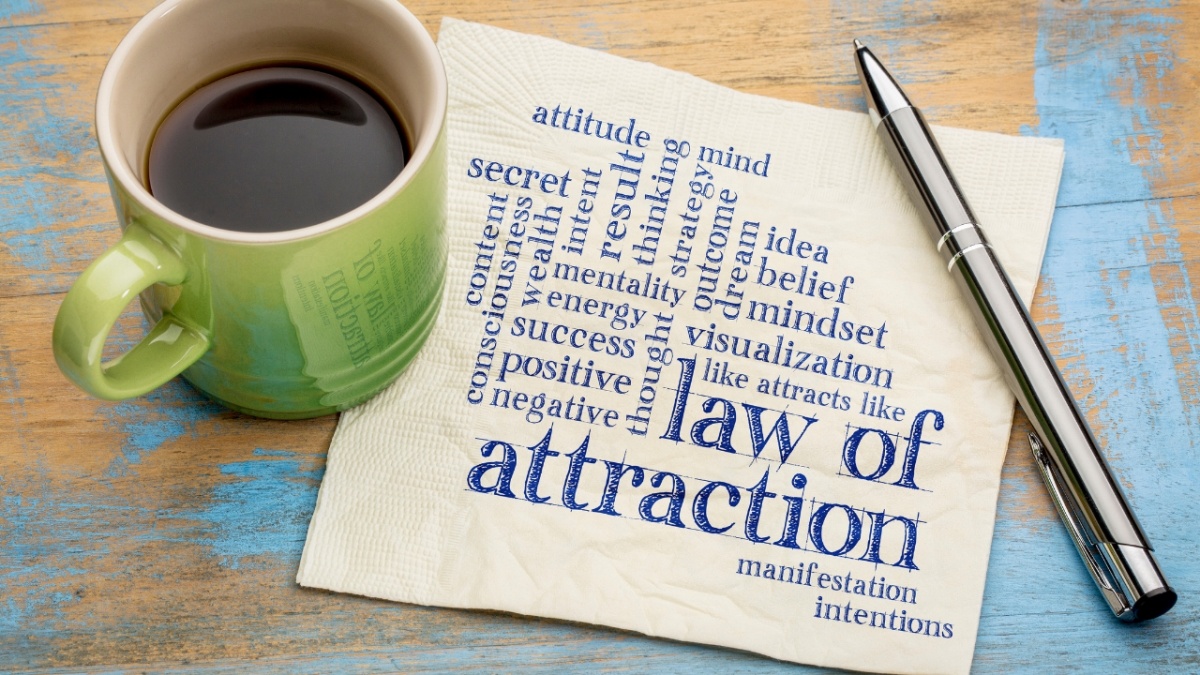
How to Apply the Law of Attraction Step #3 – Get into Positive Vibratory States Often
Feeling tones are powerful influences on our thoughts, and in turn the vibrations we project out. So you have to stay in a positive vibratory state as often as possible. It’s impossible all the time — we’re bound to have a few lows — but revert back to a higher state as fast as authentically possible.
Think about all the good things in your life. Think about everything you’ve already managed to do and accomplish.
Don’t focus on that endless to-do list. Don’t dampen your success by thinking that it’s small or inconsequential compared to the work that remains. Don’t compare yourself to others who are already “there.”
This is why gratitude is such a key practice. When we dip into the pool of gratitude, acknowledging even the small and simple things, we automatically resonate at a higher energetic level.
How to Apply the Law of Attraction Step #4 – Visualize the Big Picture with Physical Representations
Get creative and prepare a dream board. This should contain images and words that represent your life goals. The act of preparing it and seeing it will help you create this reality in your mind’s eye. As you visualize, you will set out the vibrations for this perception to become physical reality — the reality of your future.
It is also a visual aid that reminds you of what’s at stake and all that is possible. Leave it out in the open and refer to it often, particularly early on in your LOA practice.
Use it to set your intentions.
How to Apply the Law of Attraction Step #5 – Reaffirm the ‘Small’ Victories
In the evening, take a moment to reflect on your day. If you would like to share it with your family at the dinner table, tell them what you have managed to achieve through the day and what you loved the most. This process acts like reaffirmation.
It also brings you back to a high mental state where LOA is ripe for action. Especially in the evening, or right before bed — this is a potent time for you to access the subconscious realm with your intentions, energy, and desires for the future.
CREATING MOMENTUM WITH PRACTICE
When you combine the 3 foundational principles with our 5-step power guide, you’re sure to see results. If you have doubts, look into quantum physics. Look at other people who stand by how the law has worked for them. Even consider times when you “psyched” yourself up into doing something well and it worked.
Always remember to put embody positive energy authentically. Gratitude, mindfulness, and reflection are vital to attracting success in your life. The truth of the matter is that the law of attraction works when you work it.
Remember, right there is the key to making it all work. Your implementation — your action. Once you get going, you’ll feel no desire to turn back.
Next steps to consider
We help you learn all of this and more in our groundbreaking neuro-performance programs.
This 12-week transformation profoundly benefits every aspect of your life: career, daily performance, health, wellness, cognitive function, habits, relationships, energy, emotional growth, and beyond. That’s because unlike any other program, we focus on the brain - the root of all change.
Unlocking your full potential is about learning, knowing, and transforming into your highest self. Our trainings help you unleash yours. Explore our programs now.
Join our Alive Mindful Optimist Newsletter
Receive our Modern Day Stress Warrior Series & Mindfulness handouts as our gift to you.


